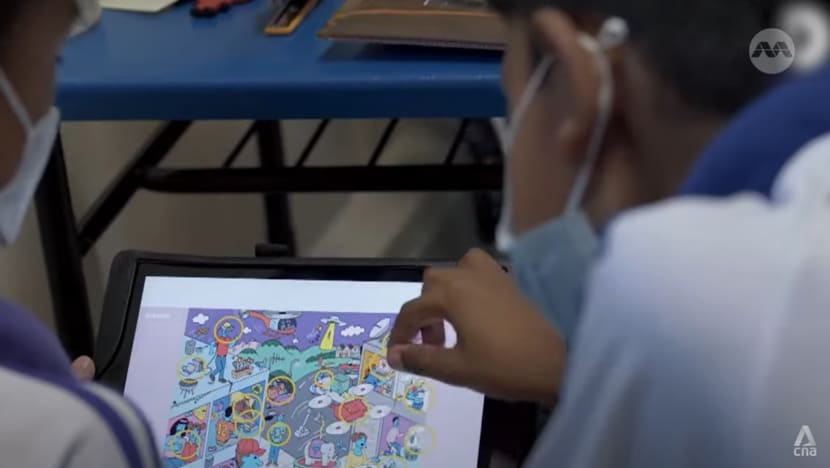Singapore launches blueprint for ‘future design school’ to prepare youths for an AI-centric future
Since 2022, more than S$1 million (US$740,000) has been spent to test transformative learning experiences for students.

Secondary school students learning design thinking.

This audio is generated by an AI tool.
SINGAPORE: Amid a rapid rise in automation and artificial intelligence worldwide, Singapore’s first national-level design education committee has come up with a new strategy to teach innovation and design in schools.
The goal: To have a workforce prepared for an economy that is increasingly defined by challenges like AI, climate change, and an ageing population.
On Thursday (Jun 13), the Design Education Advisory Committee – appointed by the Ministry of Trade and Industry in early 2020 – unveiled a blueprint for a “future design school”.
The blueprint aims to put design thinking at the core of daily curriculum from the primary to tertiary levels, as a central life skill for all students.
It will push the idea of design beyond established conventions in disciplines like architecture, product and fashion design.
COMPLEMENTARY WAY OF THINKING
“The introduction of design thinking, which is a form of creative problem-solving, basically offers not just an alternative but a complementary way of thinking,” said committee chairman Low Cheaw Hwei.
“This is very different from linear thinking, right? We're used to rote learning and trying to find answers from the book, but in design thinking, it actually also takes on the activity of prototyping your ideas very quickly,” he told CNA’s Singapore Tonight programme.
Ms Dawn Lim, executive director of the DesignSingapore Council – a subsidiary of the Economic Development Board – said some of the best products and services today are made with the user or consumer “at the centre of the entire design process”.
She cited Dyson products, as well as the Singapore Airlines experience, as examples.
Ms Lim added: “What we're trying to do with design education is to bring that skill to everybody coming through the education system, so that over generations, we’re creating creative thinkers and problem solvers who can do that at scale.”
NETWORK OF HIGHER LEARNING INSTITUTES
The “future design school” concept comprises a network of Institutes of Higher Learning which will offer “distinct courses and cultures that play to their respective qualities, strengths and heritage”, said the DesignSingapore Council in a press release.
At the higher-education level, students will collaborate with industry partners for longer work experiences under dedicated mentorship. There are plans to scale up such initiatives in the coming years.
Since 2022, more than S$1 million (US$740,000) has been spent to test such transformative learning experiences for students. These were formulated by the Design Education Advisory Committee two years ago.
This testing led to four successful proof-of-concepts, including a bootcamp for students and staff from various Institutes of Higher Learning to collaborate with organisations on real-world projects.
The DesignSingapore Council has also engaged more than 3,700 students from over 70 schools, who participated in programmes to broaden their creative thinking through design.
At St Joseph’s Institution, students collaborated with design mentors to find new ways to reduce social isolation and loneliness among the elderly.
“Learning from experience, adults who have … done the process before have created real life-like projects, learning from them has really helped us,” said Year 3 student Adrien Aguilar.
“The biggest takeaway from the project is more of how to use design thinking to create something tangible that … really applies to real life problems.”
Meanwhile, at Temasek Polytechnic, students use AI to transform hand-drawn sketches into design ideas. Aside from taking their lessons to the next level, educators want to show students that design can be a creative catalyst for even more innovative ideas.
Ms Elaine Ho, Temasek Polytechnic’s School of Design director, pointed out the importance of continuing to teach design fundamentals.
“The integration of technology and generative AI serves as a complementary aspect to help to enhance and to augment the outcomes of the students' work,” she added.

















